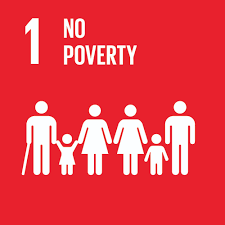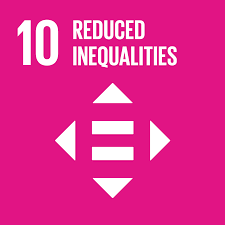A Closer Look Into African American Poverty
- Genene

- Dec 3, 2020
- 3 min read
This article is focused on the following UN Sustainable Development Goals:
The world has made great leaps in fighting poverty as a whole. Since 1990 we have had over 1 billion people rise out of poverty. However, as much as we have done in the past several decades we still have 9.2% (689 million people) of the world living on $1.90 a day. Now due to the COVID 19 pandemic, we are going backward. Poverty is drastically increasing. The World Bank estimates that around 115 million people will go into poverty in 2020. As citizens of the globe, we all need to take steps to fight poverty.

Usually, when people think about poverty, the US is not the first country that comes to mind for obvious reasons. However, when the issue of racism is brought up, one of the first countries we think of is the US. 11.8% of the US population lives in poverty. In recent months due to the Black Lives Matter movement gaining more attention and protests happening all across the country people have become more aware of racism. But for most black Americans who live in poverty, Black Lives Matter protests during the summer didn’t change much of their lives. They still struggle to make ends meet, they still have to hold multiple jobs to feed their kids, and they still worry that their kids will be discriminated against because of their race.
The odds continue to be stacked against black children in the United States. For instance, in 2018 more than 32 percent of African American children were living in poverty. That means 1 in 3 African American children lived in poverty. That is extremely high, especially when compared to other races living in poverty. Of course, there is poverty in all races. However, poverty is far from evenly distributed across the United States. Take a look:

Percentage of children under age 18 in families living in poverty, by child’s race/ethnicity: 2010 and 2018
According to this data, only 10 percent of white Americans lived in poverty in 2018. Sure it seems that poverty is decreasing overall. However, that is not the point. There are several reasons for such high poverty rates among Blacks vs. Whites. Several things such as personal responsibilities and structural pressure could lead to poverty.
However, for minority races such as African Americans, many of the factors that lead them to poverty are out of their control. African Americans are more likely to live in poor neighborhoods and inadequate schools. In addition, they face discrimination as well as limited work and advancement opportunities. Another major factor is also generational poverty. If you combined all these data, you can see why they are more likely to live in poverty. Now you can see why although black Americans make up one in eight Americans, they make up almost one-fourth of the nation’s impoverished population.
Things you can do to help fight poverty around the world:
Learn more about World Vision’s work to eradicate global poverty.
Give to bring lasting change around the world by delivering life-saving help where it’s needed most.
Sponsor a child to help provide access to essentials such as clean water, healthcare, economic opportunity, and education. For $39 a month, you’ll help that child and their community to stand tall, free from poverty.
Join groups Free Rice
Things you can do to fight poverty in the US:
Support increase of minimum wage to $15 an hour. You can contact your senators and representatives and urge them to vote for minimum wage.
Make a personal commitment to help homeless families. You can do this by visiting a local shelter, become a big brother or sister, and be a role model for these families.
Donate here to help fight poverty in America.
Donate to food kitchens in your hometown.
Remember, change starts with you.
External Resources
Ways to learn about poverty in the world and in the United States:
This report illustrates the health and mental health outcomes for children living in poverty.
Provides statistics about poverty around the world
Provides statistics about poverty around the world
4. Watch these documentaries on global poverty
Bibliography
Donate to End Poverty in America: U.S. Poverty. donate.worldvision.org/gift-
catalog/poverty-in-america.
Peer, Andrea. “Global Poverty: Facts, FAQs, and How to Help.” World Vision, 16 Oct. 2020,
www.worldvision.org/sponsorship-news-stories/global-poverty-facts.
“Characteristics of Children's Families.” The Condition of Education - Preprimary,
Elementary, and Secondary Education - Family Characteristics - Characteristics of
Children's Families - Indicator May (2020), nces.ed.gov/programs/coe/indicator_cce.asp.






Comments